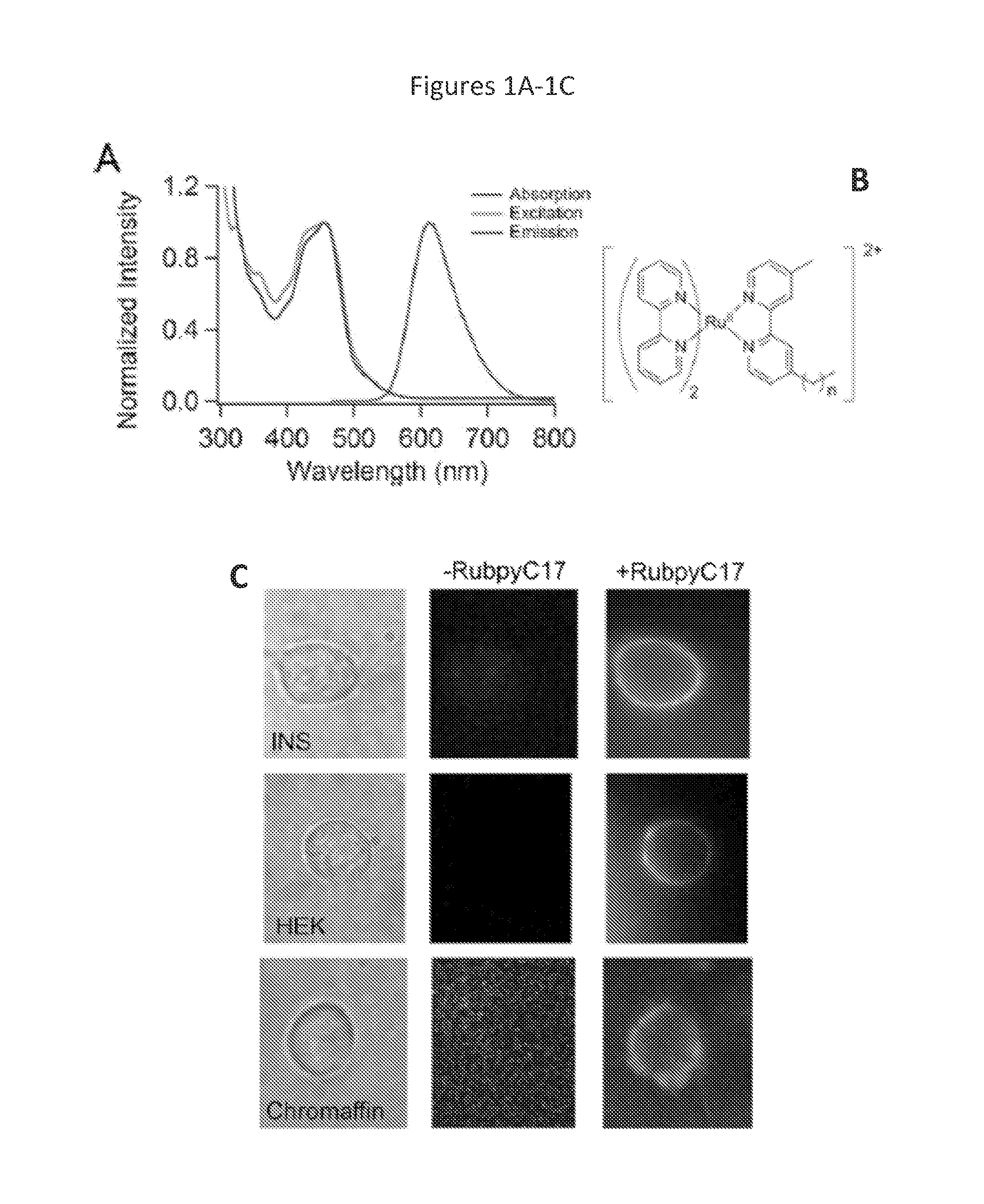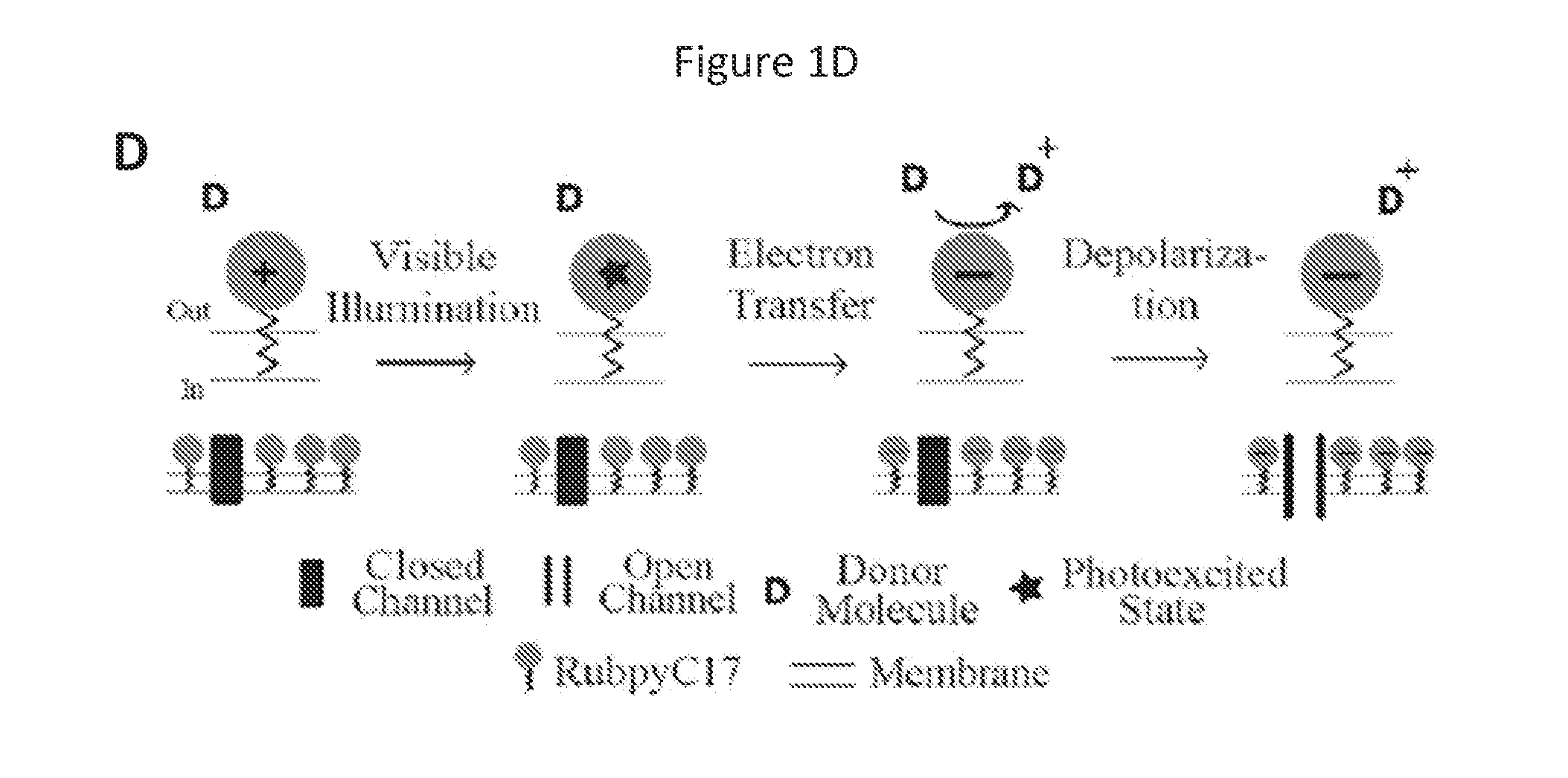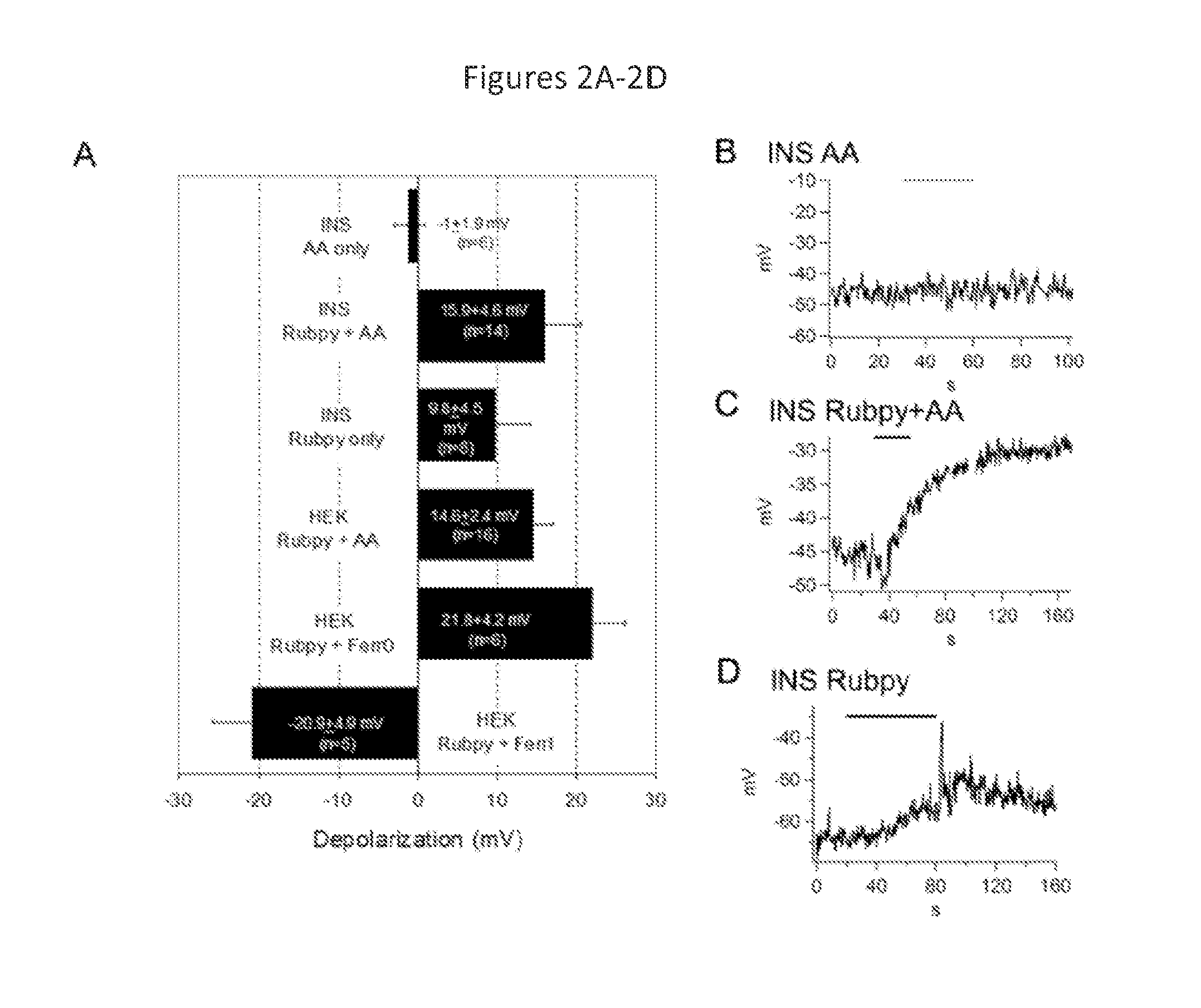Photoactivated molecules for light-induced modulation of the activity of electrically excitable cells and methods of using same
a technology of photoactivated molecules and cells, applied in the field of compositions and methods for modulating the electrical activity of cells, can solve the problems of loss of productivity, increased medical costs, reduced quality of life and increased medical costs, etc., and achieve the effect of normal visual acuity
- Summary
- Abstract
- Description
- Claims
- Application Information
AI Technical Summary
Benefits of technology
Problems solved by technology
Method used
Image
Examples
example 1
[0130]As discussed above, photovoltaic compositions are used, in several embodiments, to modulate the signaling activity of certain electrically excitable cells in order to synthetically enable the compositions to substitute for functional neuronal tissue. Additional experiments corroborating the above-referenced concepts are provided below.
Methods
Synthesis of [Ru(bpy)2(bpy-C17)](PF6)2
[0131]RubpyC17 refers to the compound [Ru(bpy)2(bpy-C17)](PF6)2. In several embodiments, a 17-carbon tail has been conjugated to one of the three bipyridines to allow for stable insertion into the plasma membrane (FIG. 1A). The bpy-C17 ligand was synthesized following established protocols. Briefly, 0.7 mL lithium diisopropylamide (LDA) (2 M) was added dropwise to a cold tetrahydrofuran (THF) solution of 4,4′-dimethyl-2,2.-bipyridine (0.25 g, 1.3 mmol) under an argon atmosphere. After 30 min, into this brown solution was cannulated a solution of dry THF containing 1-bromohexadecane (0.46 g, 1.5 mmol). ...
example 2
Synthesis of the D-B-A Complex
[0162]The development of a synthetic strategy for the D-B-A complex involves the construction of a donor-bridge ligand (D-B) (11) that covalently binds to the acceptor moiety to form the final complex (12) (Scheme 1; FIG. 8). The donor is 10-(prop-2-yn-1-yl)-10H-phenothiazine (1), the acceptor is based on rhenium (I) tricarbonyl chloride diimine complex, and the bridge is composed of three phenylene-ethynylene units. The D-B ligand features a terminal bipyridine, capable of binding strongly to rhenium, eliminating the need for synthesis of D-B ligand in large quantities. 11 was constructed in a stepwise approach using zinc-mediated, palladium-catalyzed cross-coupling reactions in a microwave reactor and protecting group strategies. More precisely, the synthesis of 11 begins with the selective coupling of the donor (1) to 3-bromo-5-iodobenzoate (2). Both 1 and 2 were prepared according to established protocols. The resulting compound (3) was coupled with...
example 3
[0177]As discussed above, several embodiments of the present invention relate to the use of light to control neural activity by generation and administration of photovoltaic nanoswitches (PVNs). In several embodiments, the PVNs disclosed herein are suitable for embedding in the outer face of the neural membrane and, upon illumination, reversibly alter electrical activity of the cells in which they are embedded. Advantageously, PVNs as disclosed herein operate, in several embodiments, without the need to express foreign proteins and PVNs function at visible wavelengths and at near-ambient light intensities. Thus, in several embodiments, the PVNs not only enable further development of the knowledge base related to electrical signaling in neural circuits and neuroendocrine tissues, as well as in the retina of animal models for photoreceptor degeneration, but also are positioned to reduce the major health burden of heretofore, untreatable adult blindness, by providing a new treatment sp...
PUM
 Login to View More
Login to View More Abstract
Description
Claims
Application Information
 Login to View More
Login to View More - R&D
- Intellectual Property
- Life Sciences
- Materials
- Tech Scout
- Unparalleled Data Quality
- Higher Quality Content
- 60% Fewer Hallucinations
Browse by: Latest US Patents, China's latest patents, Technical Efficacy Thesaurus, Application Domain, Technology Topic, Popular Technical Reports.
© 2025 PatSnap. All rights reserved.Legal|Privacy policy|Modern Slavery Act Transparency Statement|Sitemap|About US| Contact US: help@patsnap.com



